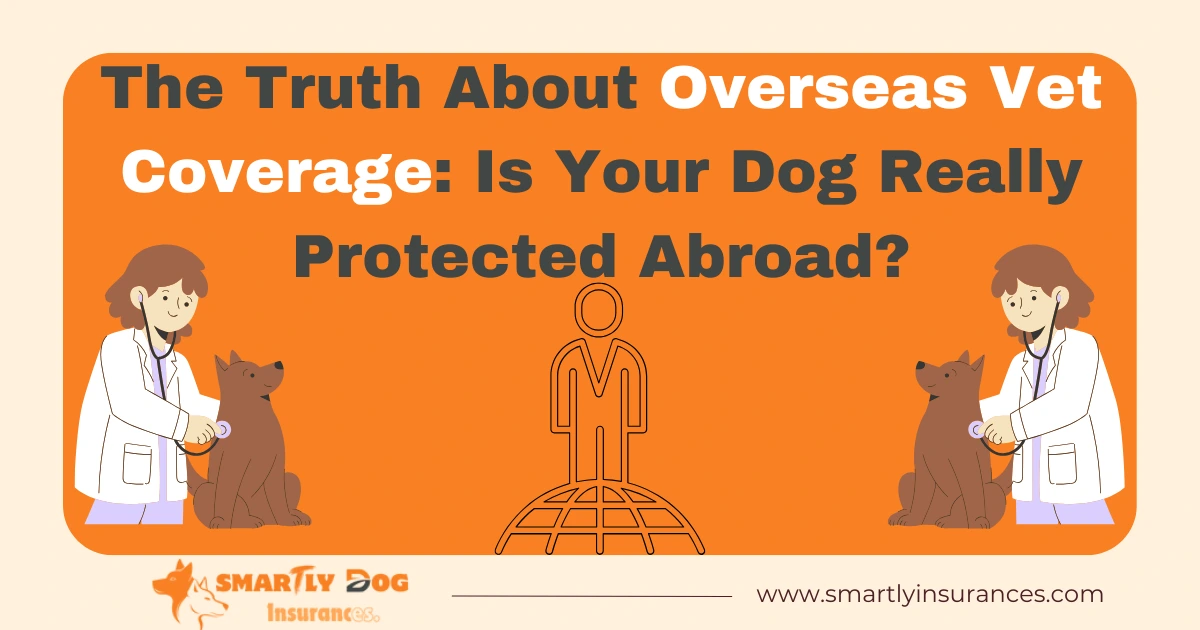A remarkable 78% of American pet parents travel with their furry companions each year. This trend makes dog insurance that covers overseas vet treatment more significant than ever. Many pet owners believe their pets have protection abroad, but international coverage works differently than expected.
Most pet insurance providers restrict their coverage to specific regions. Protection levels vary from $100 to $500 per pet. Pet travel insurance fills this coverage gap by paying for overseas vet fees, quarantine costs, and emergency expenses when pets go missing during travel.
Understanding international pet insurance coverage helps determine your dog’s protection abroad. This piece covers everything from required documentation to country-specific regulations that prepare you for veterinary emergencies while traveling with your four-legged friend.
Understanding Pet Travel Insurance Basics
Pet travel insurance is different from standard pet health insurance. The original policies specifically cover your pet’s medical needs during overseas travel, instead of providing year-round health coverage.
What overseas vet coverage has We focused on emergency medical treatment in overseas vet coverage. The policies typically offer reimbursement ranging from $100 to $500 per pet. On top of that, it provides detailed coverage that has quarantine costs, lost travel document replacement, and emergency expenses if your pet goes missing abroad. Your policy stays active for about 60 days each year.
Key policy terms to know You need to understand policy terms to get the most from your coverage benefits. Most pet insurance policies need you to pay the veterinarian directly and submit bills to get your money back. Annual coverage limits typically range from $5,000 to unlimited amounts. Your policies have deductibles – amounts you must pay before insurance coverage starts.
Common exclusions Pet travel insurance has some important restrictions. Here are the critical items you should think over:
- Pre-existing conditions and preventable diseases
- Routine and preventative health care unless specifically added
- Age-related restrictions for very young or senior pets
- Breed-specific conditions, especially when you have certain dog breeds
- Behavioral problems and elective procedures
The administration costs like form completion and medical record verification usually aren’t covered. Many more policies don’t cover pregnancy complications and bilateral conditions – health issues that affect both sides of the body.
How to Verify Your Dog’s Coverage Abroad
Your dog’s overseas coverage needs careful attention and proper documentation. You should contact your insurance provider to verify international coverage limits and reimbursement rates. Most providers limit coverage to specific regions and some only cover the US and Canada.
Steps to check policy coverage Start by exploring your policy documents that cover international travel clauses. You need to verify these key elements:
- Coverage duration abroad
- Maximum payout limits
- Covered medical situations
- Age restrictions
- Pre-existing condition exclusions
Make sure your policy has overseas vet coverage as a standard feature or needs an additional add-on. International claims need pre-approval and specific documentation, unlike domestic coverage.
Required documentation We needed an international health certificate from a USDA-accredited veterinarian. You should get this certificate within your destination country’s timeframe since most become valid when the veterinarian signs them.
The key documentation has:
- Original endorsed health certificate
- Vaccination records (if required)
- Laboratory test results
- Import permits (for specific countries)
- Self-addressed pre-paid express shipping label
Send all paperwork through overnight express service to avoid delays. Your pet must travel with the original endorsed documentation. Keep copies of all submitted documents and approval confirmations from your insurance provider.
Note that covered vet fees might change based on your length of stay in the foreign country. You’ll need to pay for veterinary care upfront and file claims for reimbursement at your policy’s rate unless your provider offers Vet Direct Pay.
Country-Specific Coverage Requirements
Pet insurance coverage requirements differ significantly from one region to another. Each area has its own set of regulations that pet owners need to understand.
EU coverage rules The European Union enforces strict pet travel requirements. Dogs entering EU countries must have an ISO-compliant microchip because EU transponders can’t read non-ISO chips. Pets need these items to enter EU nations:
- A valid EU pet passport or animal health certificate
- Current rabies vaccination
- Rabies antibody titration test (for pets from specific countries)
- Tapeworm treatment (for Finland, Ireland, Malta, Norway, and Northern Ireland)
The EU animal health certificate must be issued within 10 days of arrival. It stays valid for 4 months or until the rabies vaccination expires.
Asia-Pacific regulations The Asia-Pacific pet insurance market shows impressive growth, with revenue hitting USD 1,665.6 million in 2023. The market continues to evolve and experts project a 19% CAGR from 2024 to 2030.
China leads the market, and pet insurance premiums should reach RMB 1.4 billion by 2025. Japan and South Korea already have mature markets, while Thailand shows strong growth potential.
North American policies North American coverage comes with simpler terms. Major insurers like Trupanion provide coverage throughout the United States, Canada, and Puerto Rico, including US and Canadian military bases worldwide.
Coverage restrictions change based on the provider. To cite an instance, Embrace Pet Insurance covers traveling pets that live in the US for at least 51% of the year. Nationwide remains unique by offering worldwide coverage.
Real Claims Experience: Success and Failure Stories
Pet insurance claims in real-life situations reveal some eye-opening facts about overseas coverage challenges. We noticed that 37% of pet insurance claims face rejection. This is a big deal as it means that the rejection rate surpasses car insurance (1%), travel insurance (13%), and home insurance (21%).
Common claim rejections
Insurance companies deny pet claims for several key reasons:
- Missing or incorrect documentation
- Treatment during policy waiting periods
- Exceeding annual or per-incident coverage limits
- Pre-existing conditions
- Claims filed outside the 60-90 day window
Many claim rejections happen because pet owners don’t fully grasp their coverage terms. 55% of surveyed pet owners say that policies and exclusions aren’t clearly explained. Treatment costs abroad can hit your wallet hard – just look at one case in Sweden that reached €13,000.
Tips for successful claims
Success stories from international claims show what works. To cite an instance, see how a Switzerland-based policyholder got reimbursed by providing an English translation of their Swiss vet’s note with the bill. A policyholder in Saudi Arabia got coverage by submitting claims online with currency conversion charts.
Getting your claim approved needs attention to detail. Insurance providers suggest these proven steps:
- Document everything with itemized bills
- Submit claims within the specified timeframe
- Include English translations for foreign documentation
- Provide currency conversion information
- Keep copies of all submitted materials
Knowing the appeals process is vital. Pet owners can ask for clarification if their claim gets denied and submit more documentation to support their case. Some providers let veterinarians support their clients during appeals.
Protecting Your Dog When Coverage Falls Short
Strategic planning helps prepare for coverage gaps during your pet’s international trip. We created a strong backup plan that will give your dog care even if insurance falls short.
Emergency vet networks abroad
A list of emergency veterinarians in your destination country acts as your first defense. Keep contact details of local pet-sitters who can help during emergencies and provide access to veterinary care. Digital copies of your pet’s medical records should be available throughout your travels.
Payment options in foreign countries
Several payment options exist if insurance coverage isn’t enough. CareCredit, a specialized healthcare credit card, makes it possible for pet owners to handle unexpected veterinary expenses through various financing options. The government accepts these payment methods:
- Credit card payments through pay.gov
- Wire transfers through US correspondent banks
- ACH transfers with proper documentation
- International checks marked “Payable in US Dollars”
Building a backup plan
A dedicated savings account gives you flexibility when traditional coverage isn’t enough. Pet owners who aren’t happy with insurance coverage can look into these options:
Financial assistance programs funded through grants and private donations help those with money constraints. Veterinary colleges provide discounted services for routine care and procedures.
Telehealth vet services like Bond Vet and Pawp work well for non-emergency consultations. Pet Assure, a discount program, gives 25% savings on veterinary services and 5%-50% discounts from pet-related retailers. Home-based treatment through hospice care reduces costs for terminally ill pets.
Note that you should know emergency evacuation procedures at your destination, as some situations might need quick departure or temporary pet sheltering. Consumer Reports shows pet owners aren’t satisfied with traditional insurance coverage, so keep a backup fund ready for unexpected veterinary expenses.



